Scientists fear nanoparticle threat
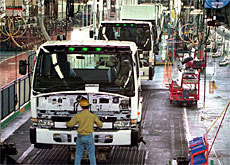
Researchers gathered in Zurich have warned that nanoparticles from diesel engines could pose a serious health threat.
They say regulatory measures and more research funding are needed to counter any potential dangers.
Over 300 scientists from around the world met at Zurich’s Federal Institute of Technology this week to discuss the effects of ultra fine particles found in diesel soot.
While debate continues in this area, the researchers are in agreement that these emissions must be regulated and curbed.
“If you see a foreign particle in a cell, it has the potential of being hazardous,” said Peter Gehr of Bern University’s anatomy institute. “One should consider this to be a problem.”
Gehr says his own work has shown that nanoparticles can enter the body’s cells through the lungs and circulate via the bloodstream. What nobody knows so far is how they interact with the cells.
Disease
Research suggests that the presence of ultra fine particles may be enough to cause respiratory disease, some types of cancer, heart conditions and even affect the central nervous system.
But the risk is not the same for everyone, according to toxicologist Günter Oberdörster of Rochester University.
“The people who could be affected are people already susceptible to cardiovascular or respiratory tract diseases,” he told swissinfo. “You have to count the elderly and the very young among these.”
Oberdörster admits this is no reason not to act, but says combating microscopic particle pollution won’t be easy.
“Our knowledge hasn’t reached the point where we can set a standard that should not be exceeded,” he added. “Part of the problem is the number of variables that have to be dealt with.”
The toxicologist says that combustion nanoparticles may not be the only problem in the future. “We don’t know if we will be exposed to airborne engineered nanoparticles.”
A recent British report highlighted the potential benefits of nanotechnology, but added that there may be hazards associated with new materials created from manipulated nanoparticles.
It recommended that nanoparticles be treated as new chemicals to ensure appropriate safety tests and labelling.
Measures
The researchers all agree that something must be done to cut down on diesel soot produced by trucks, heavy machinery and passenger vehicles.
So far, the best solution appears to be particle filters that can be added to vehicle exhaust systems. But they are far from widespread, despite eliminating over 90 per cent of diesel soot.
“We need to find incentives for industry to adapt,” said Konstantinos Boulouchos of the Federal Institute of Technology. “We need to provide ways of making it technically feasible, and financial incentives to encourage people to buy engines equipped with filters.”
Particle traps for diesel motors could be a good public health investment, with an average cost of around €600 (SFr1,000).
A recent study said that up to 19,000 deaths could be avoided in Germany if these filters were installed on exhaust systems, while earlier research set the number at 3,000 for Switzerland.
According to Boulouchos, the technology works well for cars, but some problems remain for heavy-duty engines, since they are used for much longer. He reckons these issues can be resolved over time.
“I expect it to take another 15 to 20 years before we reach our target of zero emissions,” he told swissinfo.
More research needed
Some vehicle manufactures have begun providing particle traps on their vehicles, and German car makers have pledged to instal them on new vehicles as of 2008.
Researchers are now hoping that governments will sit up and start to take notice.
“We should start research on this immediately and the authorities should also take action,” Gehr told swissinfo. “I would support enforcing the addition of particle filters on diesel engines now.”
The biologist says that funding should be freed up before nanoparticles become a real health issue.
“We are pleading for extra money now, because we realise we will be dealing with many nanoparticles in the future,” he added.
swissinfo, Scott Capper
Ultra fine particles, or nanoparticles, found in diesel soot are typically less than one micrometer in diameter, or up to 100th the width of a human hair.
Diesel engines require less fuel and emit 12% less carbon dioxide than traditional engines.
But they emit 1,000 times more particles with a diameter of less than ten micrometres than petrol motors, and produce three times more nitrogen oxides, which contribute to increased ozone levels and summer smog.

In compliance with the JTI standards
More: SWI swissinfo.ch certified by the Journalism Trust Initiative
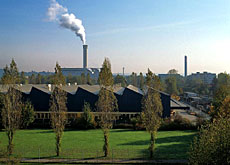
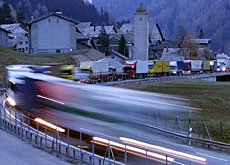
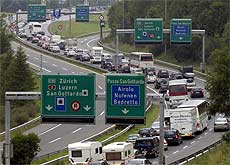
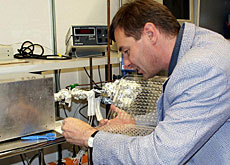
You can find an overview of ongoing debates with our journalists here. Please join us!
If you want to start a conversation about a topic raised in this article or want to report factual errors, email us at english@swissinfo.ch.